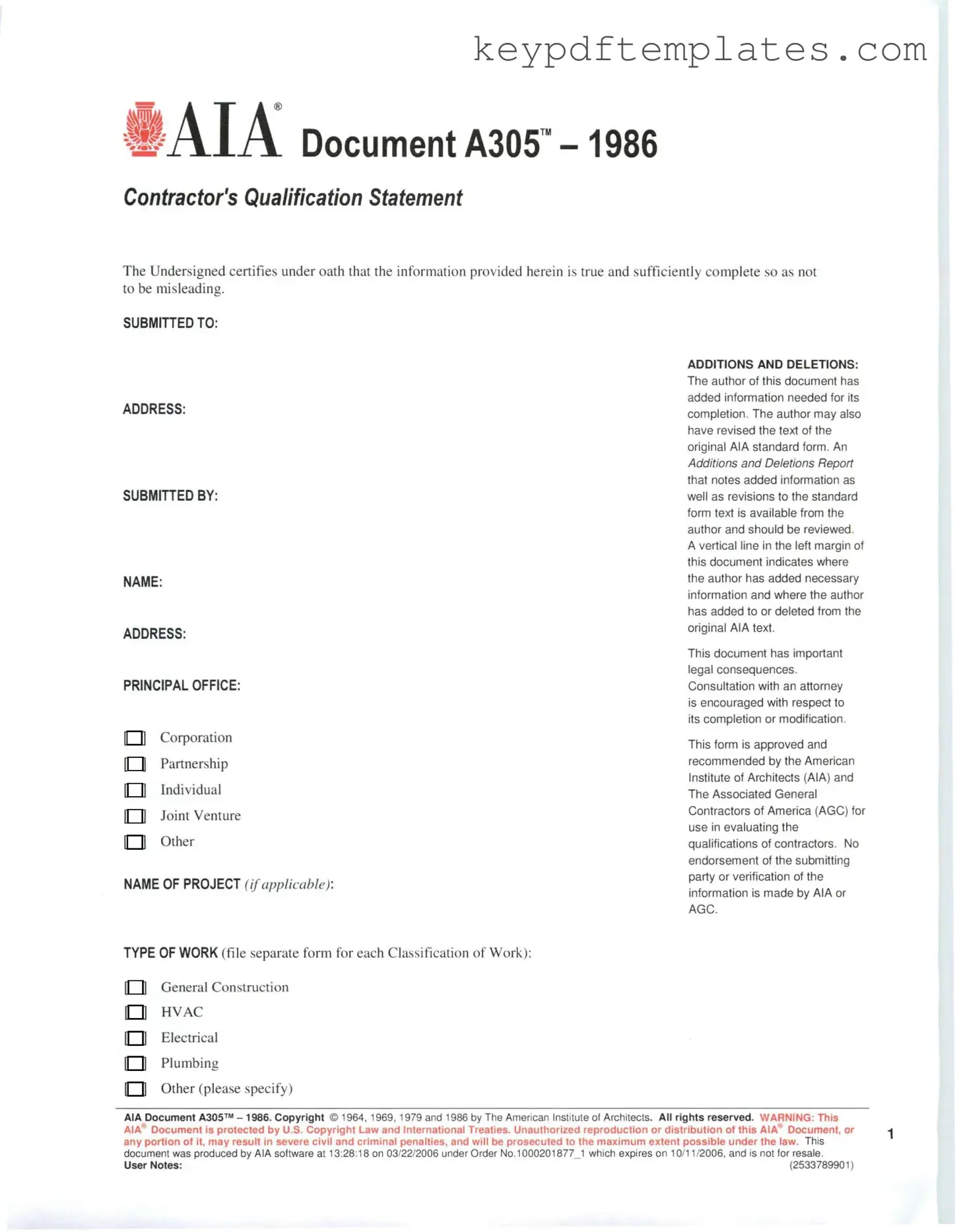Get AIA A305 Form
The AIA A305 form is a document used by contractors to provide a comprehensive overview of their qualifications and experience in construction projects. This form plays a crucial role in the bidding process, allowing owners and architects to assess the capabilities of potential contractors. By detailing relevant project history and financial stability, the A305 helps ensure that qualified professionals are chosen for construction endeavors.
Modify Document Online
